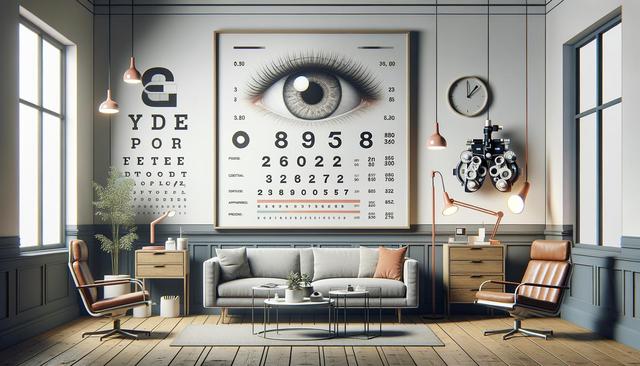Common Signs That Indicate You Need an Eye Test
Noticing changes in your vision can be subtle at first, but certain signs suggest that it might be time to schedule an eye test. Recognizing these early can help prevent further deterioration and ensure timely corrective measures. Some of the most common indicators include:
- Frequent headaches, especially after screen time or reading
- Blurred or double vision
- Difficulty seeing at night or in low light
- Squinting or straining your eyes to see clearly
- Sensitivity to light or glare
- Eyestrain or tired eyes after prolonged use
Children may exhibit different signs, such as holding books very close to the face, frequent eye rubbing, or poor performance in school due to vision issues. If you or a loved one experiences any of these symptoms, it’s a good idea to consult an eye care professional for a comprehensive evaluation.
Types of Eye Vision Tests Available
There are multiple types of eye vision tests designed to assess different aspects of your eyesight and eye health. A routine eye exam typically includes several of the following tests:
- Visual acuity test – Measures how clearly you can see letters on a chart
- Refraction test – Determines your exact eyeglass prescription
- Eye muscle test – Checks for muscle control and coordination
- Peripheral vision test – Assesses your side vision
- Slit-lamp examination – Evaluates the health of your cornea, lens, and other eye structures
Some eye tests may also include pupil dilation, which allows the optometrist to examine the retina more thoroughly. For individuals with specific concerns, such as glaucoma or macular degeneration, additional tests like tonometry or optical coherence tomography may be recommended.
How to Choose the Right Eye Test Option
Choosing the right type of eye test depends on your age, medical history, and vision needs. For example, children should have their first eye exam before starting school, while adults should schedule tests at regular intervals based on their risk factors. Here’s a general guideline:
- Children: First exam at 6 months, again at 3 years, then before school
- Adults under 40: Every 2 to 3 years
- Adults over 40: Every 1 to 2 years, more frequently if risks are present
Those with conditions such as diabetes or a family history of eye disease may need more frequent testing. It’s wise to consult an eye care specialist who can recommend the most suitable test based on your symptoms and health background.
Booking and Preparing for an Eye Appointment
Scheduling an eye test is straightforward, but preparing for it can help ensure you get the most accurate results. When you book your appointment, let the clinic know if you have any specific vision concerns or if you’ve experienced any recent changes in your eye health. To prepare for the visit:
- Bring your current glasses or contact lenses
- List any medications you are taking
- Prepare notes about any symptoms you’ve noticed
- Bring your vision insurance information, if applicable
Arrive a few minutes early to fill out any necessary forms. If your eyes will be dilated, consider bringing sunglasses and arranging transportation, as your vision may be temporarily affected after the test. These simple steps can make your appointment more efficient and productive.
Maintaining Eye Health Between Tests
While regular eye exams are important, maintaining eye health between visits is equally vital. Lifestyle choices and daily habits can have a significant impact on your vision. Here are a few practices that support long-term eye wellness:
- Follow the 20-20-20 rule to reduce digital eye strain: every 20 minutes, look at something 20 feet away for 20 seconds
- Wear protective eyewear during sports or hazardous activities
- Maintain a balanced diet rich in vitamin A, omega-3s, and leafy greens
- Avoid smoking and manage chronic conditions like diabetes and hypertension
- Ensure proper lighting when working or reading
Simple habits like these can greatly reduce the risk of eye problems. Staying informed and proactive about your vision care goes a long way toward preserving your eyesight for years to come.
Conclusion: Take Charge of Your Vision Health
Your eyes play a crucial role in your daily life, and taking care of them should never be overlooked. By recognizing the signs that you may need an eye test, understanding the available testing options, and preparing properly for appointments, you can ensure your vision remains clear and healthy. Regular visits to an eye care professional, combined with good habits, will help you maintain optimal eye health at every stage of life.


